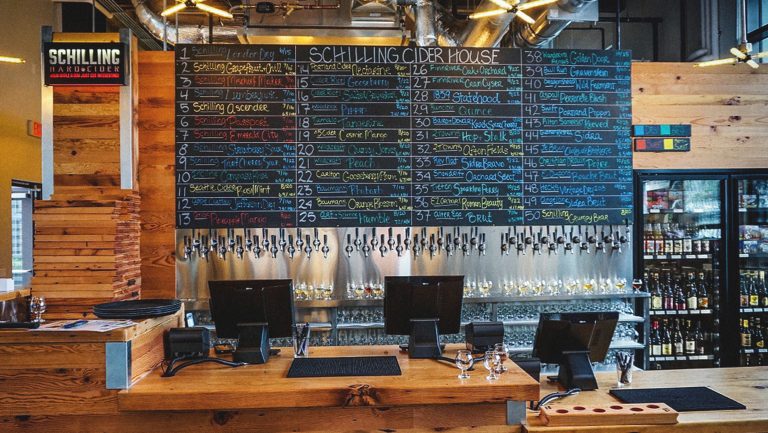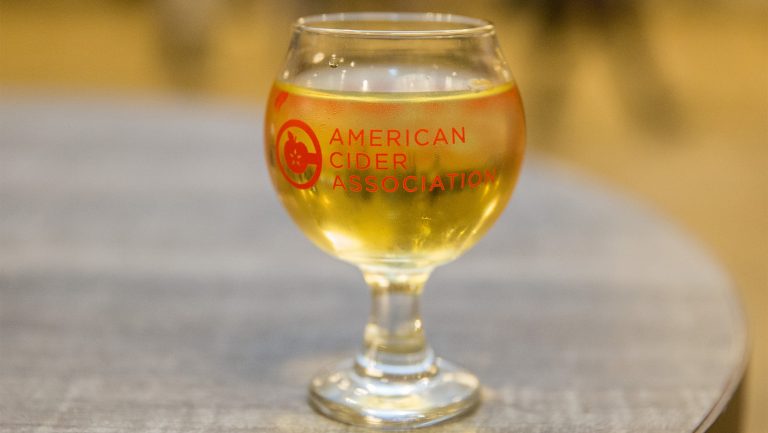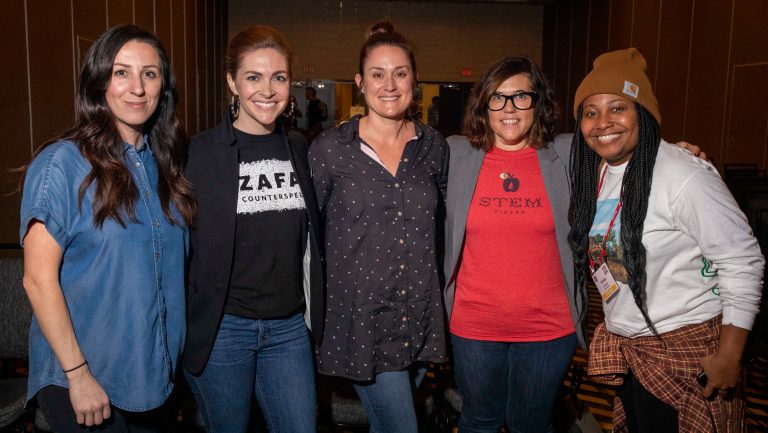In the American craft beer segment, on-premises venues have typically been places to foster consumer education and experimentation. They provide opportunities to explore new flavors, products, and brands. Consumers can then apply this knowledge to their off-premises purchasing decisions. The craft beer category is also widely represented at on-premises venues. It’s relatively easy to walk a few blocks in any size American city and stumble on a bar with a reasonably diverse beer selection. This is not the case for cider.
A Snapshot of the Cider Industry
Though off-premises cider retailers sold more case equivalents last year than on-premises establishments (12.7 million versus 8.8 million, respectively), on-premises accounts generated more revenue ($852 million in on-premises sales versus $470 million off-premises), according to Nielsen CGA, a joint venture between Nielsen and U.K.-based CGA Strategy. But an even more telling statistic highlights the opposing growth trajectories in the on and off trades. Total cider growth has been stronger in bars and restaurants than it has among package retailers, with volume growing 3.8 percent on-premises but falling 10.2 percent off-premises, according to Nielsen CGA.
While these figures suggest a greater growth opportunity for cider on-premises, many in the cider industry believe that the number of bars with a significant cider focus is lagging. There are between 25 and 30 bars in the U.S. whose primary product is cider, according to Colin Schilling, a cofounder of Schilling Hard Cider in Auburn, Washington. Schilling, who operates two of those pubs, feels that that number is far too small, especially when you consider the size of the cider category relative to craft beer and the massive presence artisanal brews have in bars nationwide. When measured as part of the beer category, cider’s share is just over a percent of total beer volume or just under one-tenth the size, by volume, of craft beer (according to the Brewers Association, craft beer accounts for about 12.3 percent of overall U.S. beer volume).

Don’t miss the latest drinks industry news and insights. Sign up for our award-winning newsletters and get insider intel, resources, and trends delivered to your inbox every week.
“If you have 100 beer bars in a city,” Schilling says, “you should have one cider bar, since cider is 1 percent of the industry.”
Even when other venues—like beer bars—carry cider, the selection is usually limited to just one to three options. Schilling recommends that anyone pondering a move into the cider business consider opening a cider bar before a cidery. “If you don’t open that cider bar,” he says, “you’re not going to be able to cultivate drinkers who go for cider first—and not as a second beverage or second thought.”
Schilling Hard Cider ventured beyond its role as a producer and opened Schilling Cider Houses in Seattle and Portland, reserving about three-quarters of its draft lines for craft cider brands other than its own. The Seattle location has 32 total tap handles, while the Portland bar boasts 50. Schilling credits another cider-centric Portland watering hole, Bushwhacker, as the inspiration for his cider bar. Bushwhacker, which opened in 2010, dubs itself America’s First Cider Pub, and it now features more than 350 packaged offerings along with eight taps. There’s also a small-batch production facility on the premises where Bushwhacker crafts its own cider.
The Value of Variety
Though cider bars help boost category awareness, some suggest that pubs that focus solely on cider can be limiting for consumers who enjoy drinking a variety of beverages.
“A problem with some cider bars is that [cider] is the only option,” says Ambrosia Borowski, front-of-the-house manager at Chicago’s The Northman, which opened in the spring of 2016 and is billed as the city’s “first cider pub and bistro.” The venue carries 120 ciders in bottles and cans, as well as 21 on draft. It also has 25 packaged and 5 draft beers and a full wine and spirits list—including 40 Calvados selections, in keeping with the apple theme. “At the end of the day, you’ve got to give people a good experience,” she says. “We are a cider pub, but we’re also a pub—we’re a neighborhood spot. It’s for everyone.”
Becoming a “neighborhood” hangout can also be a challenge for a bar whose main attraction is cider, suggests cider consultant Dan Pucci, who is also the manager and cider director at Wassail on New York City’s Lower East Side. “We’re very much a destination location,” he says. “The problem with that is it doesn’t end up being part of people’s routines. One of craft beer’s successes is that it became part of people’s routine [and] how they drink regularly.”
“Destination” bars, explains Pucci, have a hard time rising above their novelty in a location. “If people have a friend in town,” he says, “they might go to it and think it’s a cool thing, but that’s it.”
That doesn’t necessarily mean such a destination can’t evolve into a local haunt. But that involves a process.
“If you have concerns about opening a bar that just focuses on cider,” Schilling says, “maybe go 75 percent cider and 25 percent beer.” He suggests that this approach can help pull people in who don’t necessarily want cider. “And then you can carry less and less [beer] to wean them off. Where craft beer bars carry one or two ciders, a cider bar should carry one or two beers,” he says, though he concedes that the market “might not be ready for that yet.”
And that raises an ever-present chicken-or-egg question: “Do we need more cider bars or more people who drink cider?”
“What we need is more customers to sell cider to,” says Pucci. “And we only get more customers by engaging [them]. You can build it, but they also have to want to have it.”
He points to the evolution of the U.S. wine industry as a good example: “In the ’60s and ’70s,” he says, “Americans didn’t really drink wine. It wasn’t part of our culture. And then there was a very protracted effort by the industry to promote the beverage and incorporate it into people’s lifestyles—and that’s how you get success.”
The United States Association of Cider Makers has begun to address the problem of promotion with its Pick Cider marketing campaign, as well as through its efforts to develop a standardized set of descriptive terms to better communicate cider flavors and stylistic terms to consumers.
However, even with such promotional endeavors, cider is unlikely to find a broader audience if that audience isn’t able to find cider. And that will probably only change when there are more places to explore the spectrum of the category’s offerings.

Dispatch
Sign up for our award-winning newsletter
Don’t miss the latest drinks industry news and insights—delivered to your inbox every week.
Jeff Cioletti is a former editor in chief of Beverage World magazine and the author of the books The Drinkable Globe, The Year of Drinking Adventurously, Beer FAQ, and the upcoming Sakepedia. He’s a Certified International Kikisake-shi (sake sommelier).







